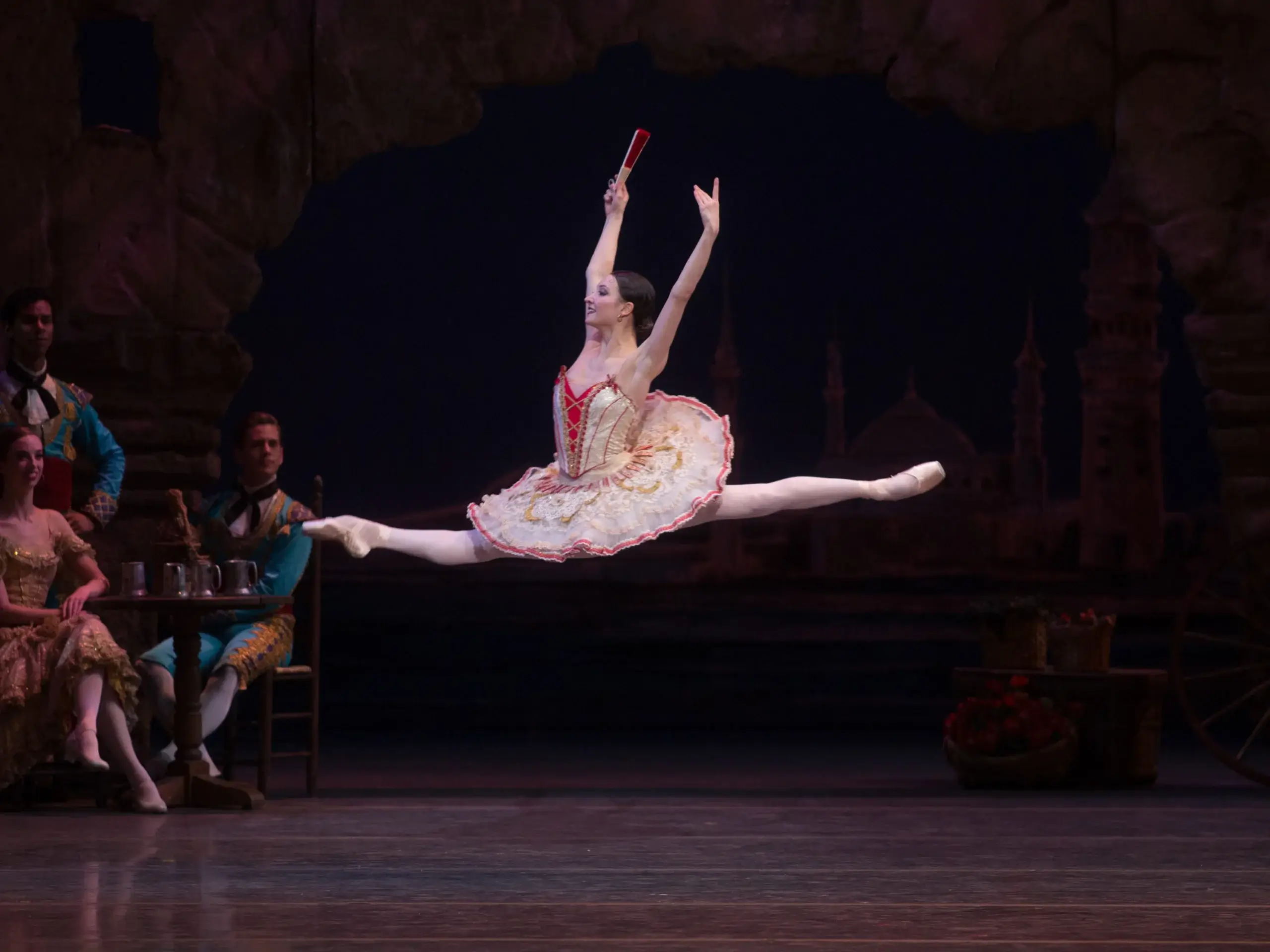Leer en español.
Two years have passed since the ABT, American Ballet Theatre, closed its doors due to the pandemic. For its return, and as a great opening bet, they bring us “Don Quixote,” a ballet in three acts with music by Ludwig Minkus and choreographed by Marius Petipa and Alexander Gorsky. The opening gala was a night full of glamour, with guests outfitted as if it were the Oscars, and with emotion throughout, such as the farewell of artistic director Kevin McKenzie, who retires this season.
This ballet is an old friend not only for the ballet company, but for the audience and the theater; it is a relic that has been programmed on several occasions over recent years for the enjoyment of the New York public. Perhaps for this reason, the American Ballet Theater has opted for this show, not having to invent a new repertoire and likely trying to satisfy those eager attendees who have not enjoyed a night of ballet at the MET for so long. The summer season, which will conclude in July, will continue with “Of Love and Rage,” “Swan Lake,” “Theme and Variations,” “Single Eye” (the only scheduled premiere), and “ZigZag.”
This “Don Quixote” is a narrative ballet, which although bearing the name of the character of Cervantes, not only has little to do with the writing of the Castilian golden age, but also relegates the central character as a mere spectator throughout the performance. Don Quixote and Sancho Panza adorn the story but do not make it their own. Gone are the giants, the trips on the back of Rocinante or Toboso, and the focus becomes dances in which Kitri and Basilio, or the dancer Mercedes and the bullfighter Espada, become protagonists. Dulcinea, who appears out of the corner, also comes to life through Kitri. Dulcinea is a girl from Seville whom Don Quixote mistakes for his beloved and to whom he finally grants the blessing of marrying Basilio, the young man with whom she is truly in love.
Although this ballet tries to be Spanish, the truth is that it that could sound like Don Quixote, but it is not. The three acts take place in Seville, where goyescas, flamencos, bullfighters and Romani keep each other company, these figures neither being from the same period, nor coinciding either in historical time with the Quixotian adventures. The set is more reminiscent of the Spanish Caribbean than the peninsula, and it is accompanied by beautifully composed music only reminiscent of a zarzuela. Despite this extrapolation of the original novel, this is a work that wants to honor Spanish culture, despite falling into some stereotypes, and notably it also provides touches far from precedent, with the use of castanets in a jota style and with musical passages that sometimes sound like later composers Bretón or Albéniz.
The dancers, as expected in the case of ABT, were exceptional, highlighting Catherine Hurlin, Hee Seo, Christine Shevchenko and Daniel Camargo. Of course, perhaps the use of three different castings, one per act, for the same characters, was too much for a short piece that is only programmed for one week.
Rebeca Blanco Prim is a critic of opera and dance in addition to her roles in production and marketing for various dance companies, musical festivals, and other cultural organizations across the world. She is the current Director and Founder of @operaypunto and has written for Ópera Actual and Opera World.
Christine Shevchenko in Don Quixote. Photo: Rosalie O’Connor, courtesy of American Ballet Theatre





